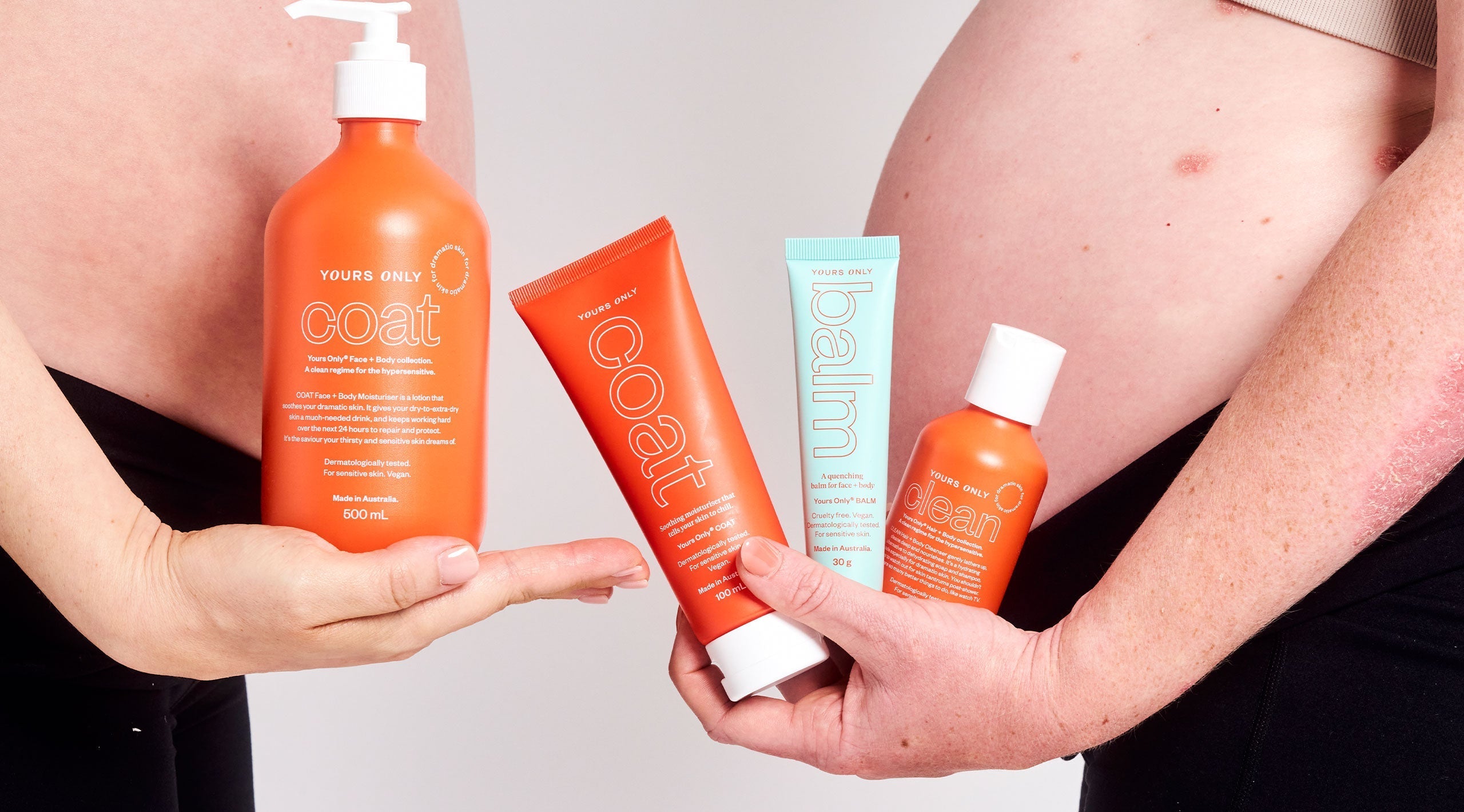
Meet my integrated GP — Dr. Anjana.
Our bodies are COMPLICATED (well, mine is at least). After years of feeling unwell and being unable to work out why — I was recommended to see an integrated GP.
Dr Anjana is a qualified GP who’s done further training in functional medicine, to help treat the root cause of what internally might be going on in our bodies. She played a huge role in helping me heal from everything my body was going through.
I asked Anjana our community’s most-asked questions. So, we’ll let her take the floor and tell you more about her experience. Ash x
Becoming an integrated GP
I‘ve always felt a calling to medicine and helping people. However, after completing my medical degree, I struggled to find a pathway within the medical system that resonated with me. I was disillusioned with the band-aid pharmaceutical approach to treating patients' symptoms and felt like there were patterns of underlying factors to patients' health issues that were being overlooked.
After taking a year off, I discovered integrative, or functional medicine. A medical approach that works to identify root causes of ill-health, rather than managing symptoms. An integrative approach investigates and addresses underlying issues such as microbiome gut health, inflammatory triggers, social, lifestyle, environmental or emotional factors to health.
This resonated with me, as it allowed me to use my medical toolbox as a GP whilst overlaying it with my integrative toolbox to treat the person as a whole integrated system, rather than treating chronic and recurrent symptoms.
It was the piece of the puzzle which provided me purpose to practice medicine, that provided patients with longer term health outcomes. It gives me great joy to help patients transform their health through integrative medicine.

Eczema
As we know, eczema is a chronic skin condition that affects 10-15% of the Australian population causing red, itchy and scaly patches that can ooze fluid. It affects not only your body, but your sleep, appearance, predisposition to infections, self esteem and aspects of quality of life.
The gold standard approach by a traditional GP’s is topical steroid creams or ointments, which I’m sure most eczema sufferers would have tried. Additional recommendations may include reducing skin dryness (via specific moisturisers and soap substitutes) and reducing heat (with cool clothing, bedding and lukewarm baths).
Calcineurin inhibitors such as Elidel, is a class of topical immunomodulators that may also be prescribed. At times antibiotics are prescribed if there is a super imposed infection. Dermatologists can use light therapies and systemic immunomodulators including biologics in cases of refractory eczema.
An integrative doctor's approach would be to look at the core drivers of a patient's eczema — such as their diet, gut microbiome, environmental triggers and stress levels. In our clinic, we find that by addressing disruptions to the gut microbiome most people see improvements in their eczema. Further improvements occur by addressing underlying emotional triggers and/or potential environmental factors such as mould exposure.
An integrative approach incorporates traditional medical testing in addition to functional testing that may include microbiome mapping, small intestinal bowel overgrowth (SIBO) testing or mycotoxin (mold toxin) antibodies.
However a handful with more complex causes of eczema may still require specific prescription medications through a dermatologist.
How does an integrated GP work out which internal triggers might be affecting the patient?
Gut health is a great place to start. Imbalance in gut health (dysbiosis) or leaky gut can trigger an overactive immune response and inflammatory skin conditions.
An integrative GP works like a detective to identify triggers through a comprehensive patient history, structuring an elimination diet and tailoring dietary recommendations. I tend to start by putting patients on a whole food diet with restrictions on sugar, dairy, gluten, soy and eggs and carefully monitor changes in health to understand the bigger picture.
Sometimes problematic foods can be evident with a comprehensive patient history alone such as high histamine foods. But don’t be alarmed with the diet — once improvements are seen, we reintroduce food groups back one by one to assist in identifying triggers. A skin prick test with an allergist may also be potentially useful for some people.
We know that eczema and gut health are very connected. Do you have any tips for people who want to improve their gut health to (hopefully) reduce their symptoms?
The most significant way to improve your gut health for the majority of people that we see in clinic is to eat a whole food diet. This means eliminating sugars, refined flours and for some also removing grains. Secondly it’s working out your triggers through an elimination and reintroduction diet. Thirdly, incorporating an evidence based probiotics to your daily protocol can be helpful.
Externally, what should people avoid putting on their skin if they’re dealing with irritation like eczema?
It’s good to start reading labels and understand how products are made. It’s beneficial to be informed and have an understanding of the chemicals we expose our bodies to. Externally those with eczema may want to avoid fragrances, preservatives (such as parabens) and harsh chemicals (such as sulfates and alcohols). For some, essential oils can also be problematic.When starting a new product for sensitive individuals, I recommend patch testing first. This is where you apply a small amount of product to a small area of the body such as the arms and if you notice any reactions over the next 24 hours, perhaps this product may not be suitable for you.
It’s an opportunity to learn about all the toxins we are surrounded by including toxins in our bath gels, cosmetics, shampoos, creams, perfumes, washing powders and dishwashing tablets. It’s a chance to start to lead a low toxin life and support brands that are doing the right thing by your skin, body and environment.
For people reading this who are dealing with eczema. Do you have any easy tips for them that might reduce their symptoms?
-
Eliminate high irritant skin care products and replace with low irritant skin products.
-
Replace all cleaning and cosmetic products with low allergen alternatives.
-
Go on a whole food diet. At the clinic we love the Whole30 diet – it’s a great elimination diet and has a lot of free recipe resources.
-
Avoid living and being exposed to mould toxins.
-
If you live or suspect you are living in a mouldy environment, get your environment tested by a registered building biologist.
Is there a link between mould illness and eczema?
Yes, chronic inflammatory response syndrome (CIRS) due to mould and mycotoxin exposure can cause skin inflammation resulting in eczema.
In our clinic, we have seen many cases of eczema significantly improve and resolve through treatment of mould toxicity and removal from the mouldy environment.
We had a 12 year old boy who had debilitating eczema throughout his body who was being wet wrapped due to its severity. He came into my office in tears. Within weeks of being removed from the exposure and initiating treatment, he was experiencing significant improvements and relief from his eczema.Another patient presented with eczema and elevated IgE antibodies levels into the thousands (an antibody associated with allergy). Upon treatment of her gut microbiome and mould exposure saw significant improvements in her whole body eczema and she went on to have a baby after many years of fertility issues.
And finally, Ash has posted a lot about her mould illness journey. People have said in the current climate, it’s next-to-impossible to find an affordable rental without mould.
Do you have any tips for people who might not be able to leave their current house, but suspect they’re dealing with mould illness?
Yes, this is a major problem in Australia and I really feel frustrated for clients that need to rent and/or move out of water damaged buildings. We really need higher enforced standards for rentals.
My main tips would be to check around the perimeter of the property for water damage, assess the gutters of the property for damage or blockage, look for water stains on the ceiling and around windows, look at the bathroom grouting, look into cupboards especially the ones under a sink and check for visible mold. Unfortunately mould can grow in areas that are not overtly visible, such as between walls, above the ceiling, or due to water ingress into the subfloor beneath the house. If you suspect mould, I suggest getting a building biologist assessment of your home.
Rental laws are there to protect renters, you do have the right to leave a mold affected property and live in a healthy building. However, the battle is in enforcing these rights and more needs to be done to protect renters. Unfortunately, in Australia there is still poor awareness about the deleterious effects of living in a water damaged building and its connection to many chronic illnesses. Hopefully, this will improve into the future.
PSA: This is not medical advice or a paid collaboration between Yours Only and Dr. Anjana. Always consult with your doctor or healthcare team.



